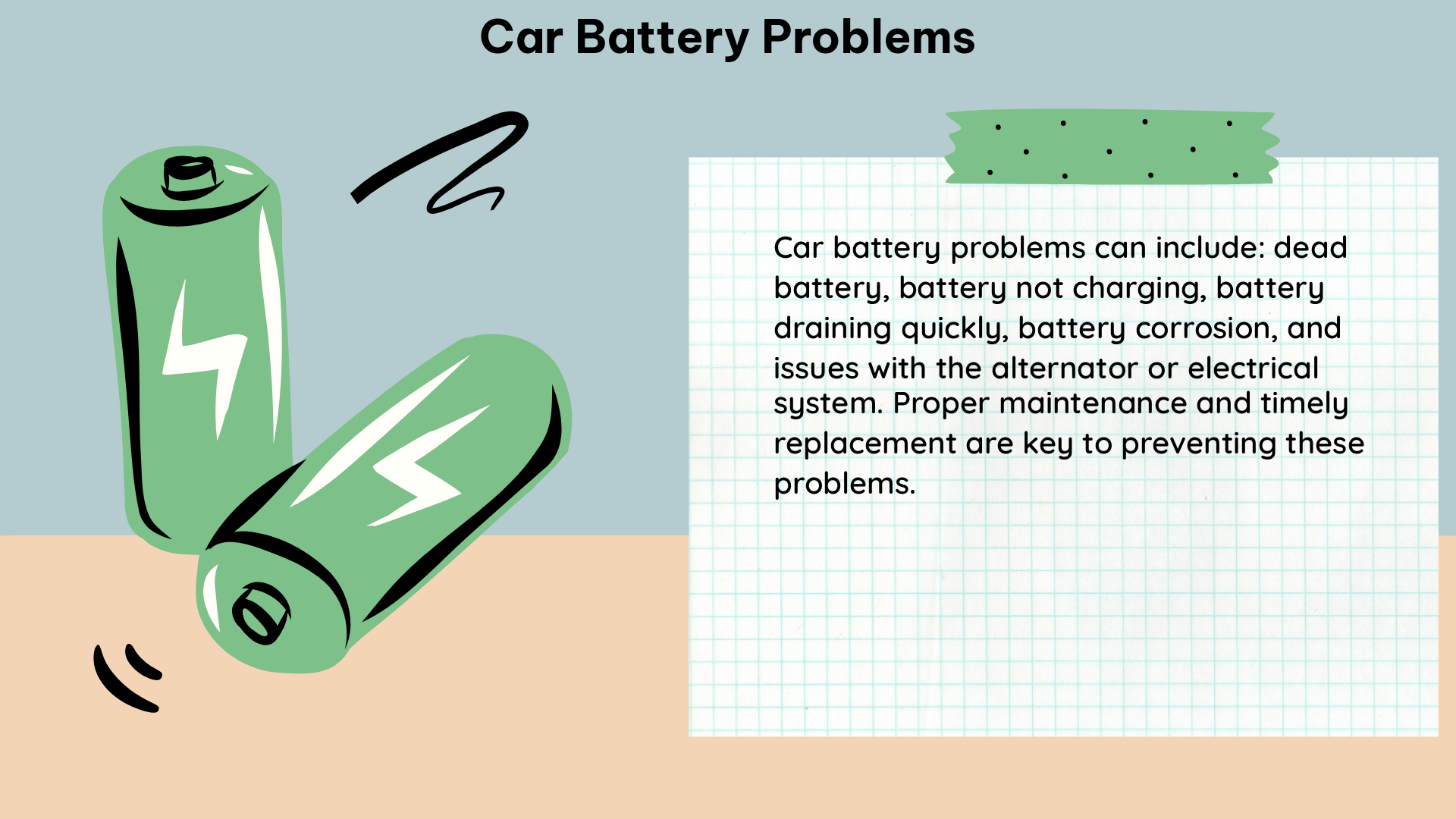Car batteries are the lifeblood of modern vehicles, providing the necessary power to start the engine, run various electrical systems, and keep the car functioning. However, car battery problems can arise due to a variety of factors, including battery age, charging and discharging patterns, and environmental conditions. Understanding the technical specifications and diagnostic methods related to car batteries is crucial in addressing these issues effectively.
Predicting Battery Lifetime and Performance
The usable lifetime of a lithium-ion (Li-ion) battery, the most common type used in modern cars, is typically around 3-5 years, depending on various factors. The performance of Li-ion batteries is affected by:
-
Temperature: Elevated temperatures can accelerate the degradation of Li-ion batteries, reducing their capacity and lifespan. The optimal operating temperature range for Li-ion batteries is between 15°C and 35°C.
-
Depth-of-Discharge (DoD): Repeatedly discharging the battery to a low state-of-charge (SoC) can also contribute to faster degradation. Keeping the DoD below 80% can help extend the battery’s lifespan.
-
Cell-to-Cell Variation: Manufacturing tolerances and other factors can lead to slight variations in the performance of individual cells within a battery pack. These variations can affect the overall battery performance and lifespan.
To predict the battery’s lifetime and performance, reliability analysis techniques can be employed. These include:
- Life Testing: Subjecting the battery to controlled conditions, such as temperature and DoD, to measure its degradation over time and extrapolate the expected lifespan.
- Degradation Analysis: Monitoring the battery’s capacity, internal resistance, and other parameters to track its degradation and predict the end-of-life (EoL).
- Accelerated Testing: Exposing the battery to more severe conditions, such as higher temperatures or deeper discharges, to accelerate the degradation process and quickly assess the battery’s lifespan.
- Quantifying the Effect of Stresses: Analyzing the impact of various stresses, such as temperature and DoD, on the battery’s performance and lifespan.
By understanding and controlling these factors, technicians can better predict the battery’s lifespan and optimize its performance.
Diagnosing Battery Drain and State-of-Health

Diagnosing battery drain and determining the state-of-health (SoH) of a car battery has become more challenging due to the increasing complexity of modern vehicle technology. Techniques used to address these challenges include:
- Battery Drain Diagnosis:
- Life Testing: Monitoring the battery’s performance over an extended period to identify any abnormal drain or discharge patterns.
- Degradation Analysis: Analyzing the battery’s capacity, internal resistance, and other parameters to detect signs of degradation.
- Accelerated Testing: Subjecting the battery to more severe conditions to quickly identify any issues with the battery’s ability to hold a charge.
-
Quantifying the Effect of Stresses: Measuring the impact of various stresses, such as temperature and vibration, on the battery’s performance and drain characteristics.
-
State-of-Health (SoH) Determination:
- Real-Time Data Analysis: Monitoring the battery’s performance data in real-time and comparing it to pre-defined warning levels to detect abnormal behaviors.
- Fleet-Wide Anomaly Detection: Analyzing data from a fleet of vehicles to identify any outliers or abnormal patterns in the battery’s performance.
- Digital Laboratory Models: Developing digital models of the battery’s behavior and comparing the actual battery state to these models to assess the SoH.
By employing these techniques, technicians can more accurately diagnose battery drain issues and determine the overall health of the car battery, enabling them to make informed decisions about maintenance, repair, or replacement.
Tracing Parasitic Battery Drain
In modern cars, the total parasitic drain on the battery should not exceed 40 milliamps (mA). Any drain over and above this “normal” drain is considered a parasitic drain, which can quickly deplete the battery’s charge.
To trace a parasitic drain, two different approaches can be used:
- Measuring Voltage Drop Across Each Fuse:
- Disconnect the negative battery terminal and connect a voltmeter in series with the battery.
- Turn off all electrical loads in the vehicle and measure the voltage drop across each fuse.
-
Any fuse with a voltage drop greater than 0.1 volts indicates a potential parasitic drain in that circuit.
-
Measuring Current Draw in the Respective Circuits:
- Disconnect the negative battery terminal and connect an ammeter in series with the battery.
- Turn off all electrical loads in the vehicle and measure the current draw in each circuit.
- Any circuit drawing more than 40 mA is considered a parasitic drain and should be investigated further.
By using these techniques, technicians can effectively identify and locate the source of the parasitic drain, allowing them to address the issue and restore the battery’s normal charging and discharging patterns.
Conclusion
Understanding the technical specifications and diagnostic methods related to car batteries is crucial in addressing car battery problems. By predicting battery life, determining the state-of-health, and tracing parasitic drains, technicians can ensure the longevity and reliability of car batteries, ultimately enhancing the overall performance and lifespan of the vehicle.
References
- Understanding the Automotive Battery Life Cycle – Porsche Newsroom (2022-02-10)
- Applying Statistical and Reliability Techniques for Determining Battery Life in Electric Vehicles (2021-02-19)
- An idiot’s guide to tracing parasitic battery drain on modern cars (2023-01-16)

The lambdageeks.com Core SME Team is a group of experienced subject matter experts from diverse scientific and technical fields including Physics, Chemistry, Technology,Electronics & Electrical Engineering, Automotive, Mechanical Engineering. Our team collaborates to create high-quality, well-researched articles on a wide range of science and technology topics for the lambdageeks.com website.
All Our Senior SME are having more than 7 Years of experience in the respective fields . They are either Working Industry Professionals or assocaited With different Universities. Refer Our Authors Page to get to know About our Core SMEs.